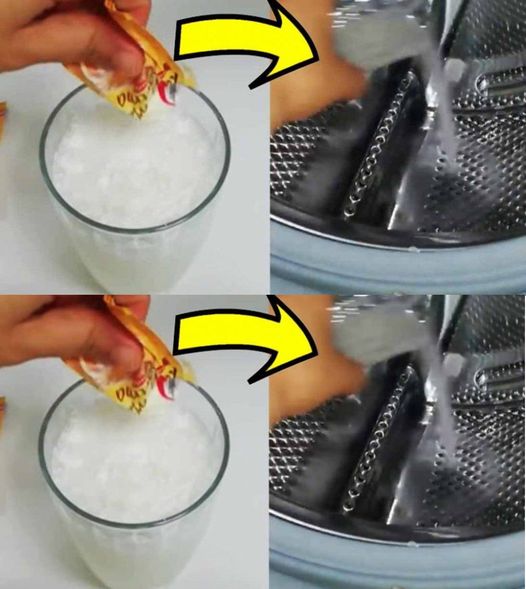ADVERTISEMENT
### **Why Does the Washing Machine Develop Odors?**
Before we dive into the solution, let’s first understand why washing machines develop odors in the first place. Modern washing machines, particularly front-loading models, are designed to be more water-efficient than their older counterparts. While this is a great feature for reducing water consumption, it can sometimes create an environment where moisture becomes trapped in the machine. When moisture is left to sit in places like the drum, door seal, or detergent drawer, it can lead to the growth of mold and mildew.
Here are some of the most common causes of washing machine odors:
1. **Residual Moisture**: After a wash cycle, water can linger in the rubber seals, door gaskets, and detergent trays, creating a perfect breeding ground for bacteria and mold.
2. **Soap and Detergent Build-Up**: Over time, detergent and fabric softener residues can accumulate in the machine. These residues can trap moisture, contributing to mold growth and creating a musty odor.
3. **Dirty Door Seal**: The rubber door seal of a washing machine, especially front-loaders, is notorious for collecting water and detergent build-up. If not cleaned regularly, it can start to emit a sour smell.
4. **Clogged or Dirty Drains**: A clogged drain hose or filter can prevent water from draining completely, causing a stale, stagnant odor to linger.
5. **Improper Use**: Overloading the washing machine or using too much detergent can prevent the washer from properly rinsing out soap and grime, which can lead to bad smells.
Understanding the root causes of washing machine odors is essential for finding an effective solution. If you address the moisture and residue build-up, you can significantly reduce the likelihood of bad smells and mold growth in the future.
—
### **The Magic of Yeast and Vinegar**
So, why yeast and vinegar? Yeast and vinegar are both powerful, natural ingredients that can tackle the problem of mold, bacteria, and odors without resorting to harsh chemicals.
#### **Vinegar: The Power of Acidity**
Vinegar is widely known for its ability to neutralize odors and break down mineral deposits, soap scum, and other residues. It has natural antimicrobial properties, making it an excellent choice for eliminating bacteria, mold, and mildew. The acidity of vinegar helps to dissolve any detergent build-up, soften fabrics, and eliminate any unpleasant odors.
– **Antimicrobial Properties**: Vinegar can kill a wide range of bacteria, mold, and mildew. This makes it effective for getting rid of the mold that often grows in the damp, hidden crevices of your washing machine.
– **Deodorizing Effect**: The acetic acid in vinegar neutralizes odors and helps freshen up the washing machine.
– **Residue Removal**: Vinegar can dissolve detergent residue and mineral build-up, which are common contributors to the musty smell.
#### **Yeast: A Hidden Secret for Fighting Mold and Mildew**
While vinegar works wonders on odors and residues, yeast may seem like an unlikely hero in the battle against washing machine mold. However, yeast is known for its ability to help prevent the growth of mold and mildew in certain environments. When yeast is used in conjunction with vinegar, it can boost the cleaning and deodorizing effects, ensuring that your washing machine remains fresh and free of unwanted smells.
Yeast works by creating a slightly acidic environment, which makes it less hospitable for mold and mildew to grow. It also helps to break down organic materials like soap scum and detergent residue, further eliminating any potential breeding grounds for bacteria.
**Benefits of Using Yeast**:
– Helps prevent mold growth.
– Breaks down organic residues.
– Contributes to creating a balanced, slightly acidic environment inside the machine.
For Complete Cooking STEPS Please Head On Over To Next Page Or Open button (>) and don’t forget to SHARE with your Facebook friends
ADVERTISEMENT
ADVERTISEMENT
